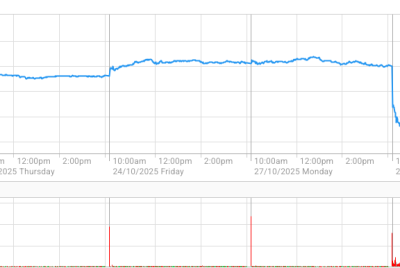Will crowdfunding save journalism?

Journalism is in an existential crisis: revenue to news organisations has fallen off a cliff over the past two decades and no clear business model is emerging to sustain news in the digital era.
In the latest in The Conversation's series on business models for the news media, journalist and academic Angela Phillips looks at crowdfunding and how it might help pay for new media ventures.
Plans have been afoot for a new sports newspaper for Scotland. The proposed paper would be weekly and big names such as tennis coach Judy Murray and football pundit Pat Nevin signed up as columnists. All it requires is £50,000 in crowdfunding pledges by February 25 and the first copy will drop in May. Developed by a group of Scottish journalists and fronted by media news site AllMediaScotland, those who pledge money would be rewarded with the first edition of the paper.
It looks very unlikely to get off the ground. Though many see crowdfunding projects as having the potential to make journalism viable for the future, the Scottish sports weekly has attracted 205 backers who have pledged just short of £10,000 since it was announced at the end of January. The Twitter account @ScotSportsPaper has just over 1,200 followers.
Crowdfunding requires a large number of people ready to back an idea with money. The most successful attempts usually involve a product, so most people are simply paying in advance for it to be developed and then delivered. To be fair, that appears to be what this Scottish proposal has been aiming for. But the very best they could have hoped for was the beginning of a database, built up via pledges, which could then be converted into subscriptions. And without support from Scottish newspapers (which would see it as a rival), the launch team would have had to make its own waves.
Bright spots
There have been some isolated examples of success in funding start-up journalism projects through crowdfunding. The Dutch news site Der Correspondent was launched with a crowdfund of $1.7m (£1.2m), which allowed it to pay salaries for a group of well respected journalists. The 19,000 backers quickly became 28,000 subscribers and within a year the website had a viable model, paid for through subscription and a paywall. It is now an established part of the Dutch media scene.
This is one of those cases where the exception proves the rule, however. Der Correspondent was launched into a news-media field which was ripe for a new voice. It got heavyweight backing from the start and, crucially, the funding was only intended for the launch – hence the more orthodox funding that has followed.
Other attempts at using crowdfunding include The Bristol Cable, an English local news magazine and website, which is “funded” by 600 shareholders paying £2.50 per month each. Launched in 2014, it is a welcome independent voice in a local news environment dominated by large chains that have stripped back their journalism to cut costs.
The funding is not enough to cover wages, however. The Bristol journalists all work for free, very much in the same tradition as those responsible for the radical local press of the 1970s, which flowered briefly due to local enthusiasm and then died away. The only sustainable long-term funding for The Bristol Cable is likely to be display advertising in the magazine. As Christopher Thomson, chief executive of publisher DC Thomson, told the House of Lords select committee on plurality in 2013, digital advertising was providing only 5%-10% of his group’s local newspaper income. Local news is still typically sustained by print.
Probably the biggest experiment in crowdfunding in the UK so far has been The Guardian’s membership scheme. With The Guardian mainly funded through a mix of advertising revenue and trust funds, the membership scheme was launched in 2014 to help plug annual losses and put the news organisation on track to break even in the future. In the first six months, according to Business Insider, 35,000 people had signed up (Guardian.com reaches 8m people each day). Guardian Media Group recently revealed that it had lost more than £100m over the last year, which is likely to lead to a 20% cut in staffing. Clearly a more sustainable income stream is needed than donations from concerned members of the public.

Funding stories
Where crowdfunding has been a little more successful has been in funding individual journalism projects. A number of funding sites such as Kickstarter have dedicated sections, while sites such as Byline are exclusively intended for the purpose. An analysis of Kickstarter journalism projects by US research organisation PEW, found that in the past year they raised $1.7m. The bulk went to individuals for specific research, while 22% went to established organisations, such as the trust-funded ProPublica, to help pay for specific projects.

An academic survey of the US crowdfunding site for journalism, Spot.us, looked at the kinds of stories that people are prepared to fund. It concluded that donors go for “specific news topics that are of immediate utility to them in daily living”, particularly those about public health and city infrastructure. Spot.us unfortunately folded a year ago, however.
Yet if crowdfunding looks relatively limited as a means of funding “watchdog” journalism that keeps a sceptical eye on people in power, this will have to be paid for by other means. We are in living in an era where the traditional funding from newspaper sales and advertising revenues is greatly reduced. Paywalls and metered content are proving to be a sustainable funding-method for some larger online publications. In the US, more than a third of news sites are behind paywalls.
And new experiments with dedicated news platforms on which subscription money is shared via micropayments might start to do for news what Spotify has done for music – witness Dutch site Blendle, which has attracted funding from the New York Times and Axel Springer; and Piano Media, which is active in eastern Europe. Whether any of this will be of any help to the mooted Scottish sports weekly is another matter, but good journalism does not come free – that is as true in today’s digital era as it was in the days of hot metal and printing presses.
This article was originally published on The Conversation. Read the original article.





















